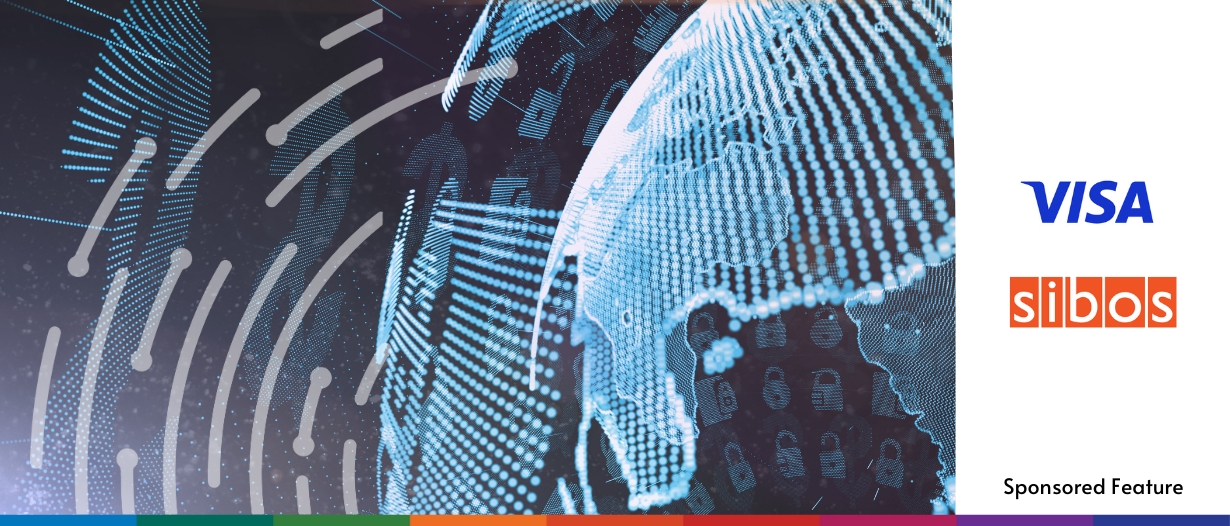Estimated reading time: 5 minutes
Listen to this podcast on Spotify, Apple Podcasts, Podbean, Podtail, ListenNotes, TuneIn
One of the prevalent themes at Sibos Toronto was the development of cross-border payments and the industry’s utilisation of new technologies.
What are emerging trends, where are the pain points in the industry, and what can we expect for the future of cross-border payments?
One year after our last conversation at Sibos 2022 in Amsterdam, Trade Finance Global spoke with Ben Ellis, SVP and Global Head of Visa B2B Connect, in Toronto to get answers to these questions on cross-border payments.
Developments and challenges in cross-border payments
Several key developments in cross-border payments have occurred over the past 12 months.
Namely, the industry’s increased willingness to collaborate and form partnerships to address long-standing challenges, with several successful partnerships noted in the last 12 months.
Partnerships have been one factor contributing to the continued growth of Visa B2B Connect, which has been gaining momentum in the market, showcasing a rising demand and diverse applications.
This platform, along with others, underscores the essential role of cross-border payments in driving the global economy, necessitating their seamless operation despite the complexities of international banking systems.
Visa B2B Connect is a global multilateral payment network that enables seamless bank-to-bank cross-border business transactions. It is a non-card-based payment network that is built on Visa’s capabilities and formidable core payments experience with distributed ledger technology to provide direct settlements of large-value transactions.
Ellis said, “One of the things that we’ve seen is a continued realisation that cross-border payments is a core part of what makes the world economy go.”
However, the journey through these advancements is not without its challenges. The sector grapples with ensuring consistent security standards across diverse entities involved in the payment process.
The transition to new technological solutions and standards, such as the adoption of ISO 20022 for structured communication, poses its own set of difficulties, requiring adaptation and alignment among industry participants.
These challenges, coupled with the complexities of the global economy and the varying banking systems, continue to demand innovative solutions and collaborative efforts for a more efficient and secure cross-border payment landscape.

Addressing pain points and enhancing the B2B payment experience
There are several pain points that consistently come up in the cross-border payments process. One prominent issue is predictability, where there are uncertainties regarding the timing and amount of money arriving at the destination.
Ellis said, “If I send the money, how do I know when it will arrive? How do I know how much will arrive? Another challenge is transparency. When I send the money, how can I track it along the way and en route?”
This lack of predictability can pose significant challenges for businesses in managing their finances and operations efficiently. On the transparency front, the lack of trackability leads to uncertainties and potential transaction delays.
Solutions like Visa B2B Connect have been introduced to address these pain points, aiming to enhance the predictability and transparency of transactions.
Additionally, partnerships, such as the recently announced Visa and Swift partnership, have been formed to work on pre-validation payment details and improve trackability with GPI data.
These initiatives are designed to identify and rectify issues upfront, ensuring that transactions travel quickly and with fewer holdups or mistakes, ultimately aiming to alleviate the challenges and enhance the overall experience for corporates engaged in cross-border payments.
Technological advancements and standardisation
There is immense potential for emerging technological advancements, and establishing common standards and rules in the field of cross-border payments is a major step towards enabling them.
Some of the promising opportunities to enhance the sector involve increasing the degree of agreement and understanding among participants on common approaches.
This consensus can streamline processes, reduce expenses, and offer a more predictable and standardised experience for both senders and receivers of payments, ultimately benefiting all stakeholders involved.
Ellis said, “The more that there can be a common approach to this, it’s better for all participants all around because you can take out a lot of the expenses, you can take out some of the challenges, give a more predictable experience and more standard experience.”
The ISO 20022 standard will foster such commonality, provide a unified framework and language, and enable structured communication and data exchange among diverse participants.
While this standardisation approach isn’t the end-all-be-all, it addresses the challenges associated with unstructured data and varying interpretations, paving the way for improved interoperability and laying a solid foundation for future technological development.
Although challenging, the transition to more structured formats like JSON-rich schema is seen as a positive step towards achieving a more integrated and efficient cross-border payment ecosystem.

Security and future expectations
Security is a foundational element in cross-border payments, yet its significance often only becomes apparent when compromised.
“It’s one of those things that is a bit like oxygen. Sometimes, you take it for granted until it’s not there,” said Ellis.
In a multifaceted industry like cross-border B2B payments, where transactions navigate through various banks, networks, and entities, ensuring security cannot be relegated to a single party.
The joint responsibility of every participant is essential for maintaining strong security measures across the payment process and preserving the system’s trustworthiness and reliability.
The diverse nature of the payments ecosystem, characterised by different levels of cooperation and multiple transaction points makes it essential to implement consistent and comprehensive security measures for all parties.
Promoting the right standards, checks, and approaches is essential to fostering a secure environment that safeguards both the senders and receivers of payments. This collective effort is pivotal in reinforcing the integrity and reliability of the cross-border payments system.





























